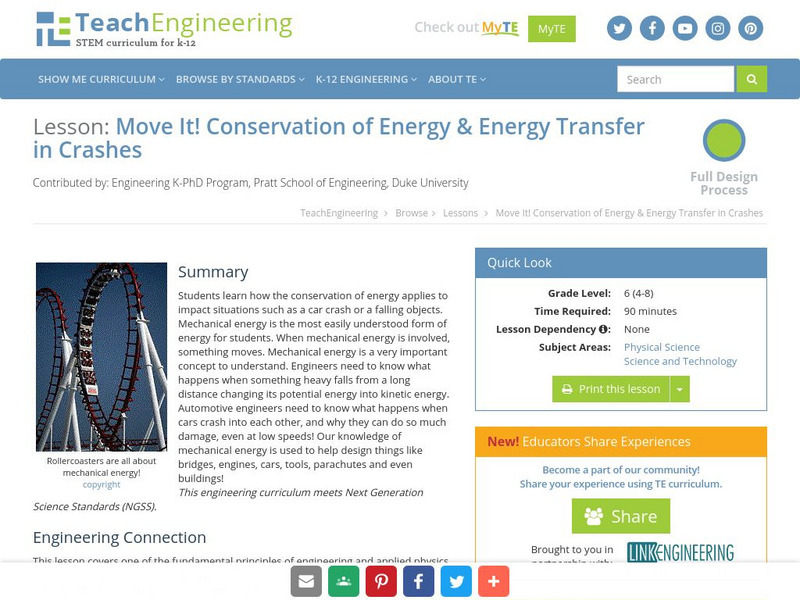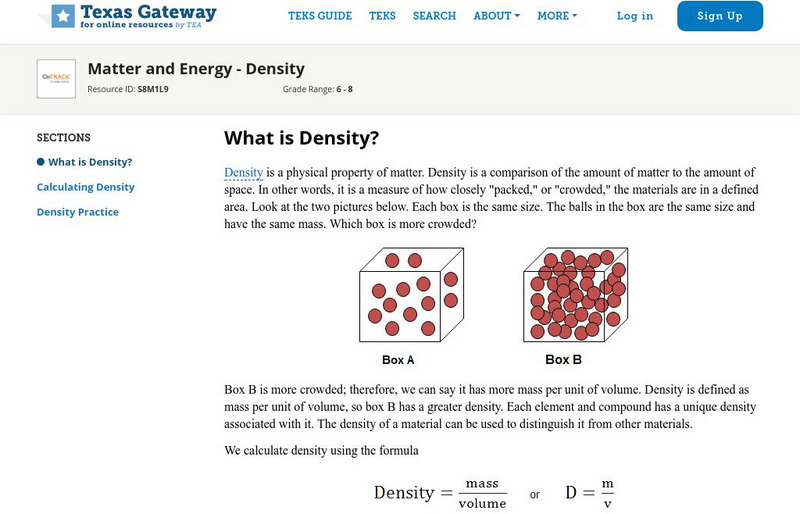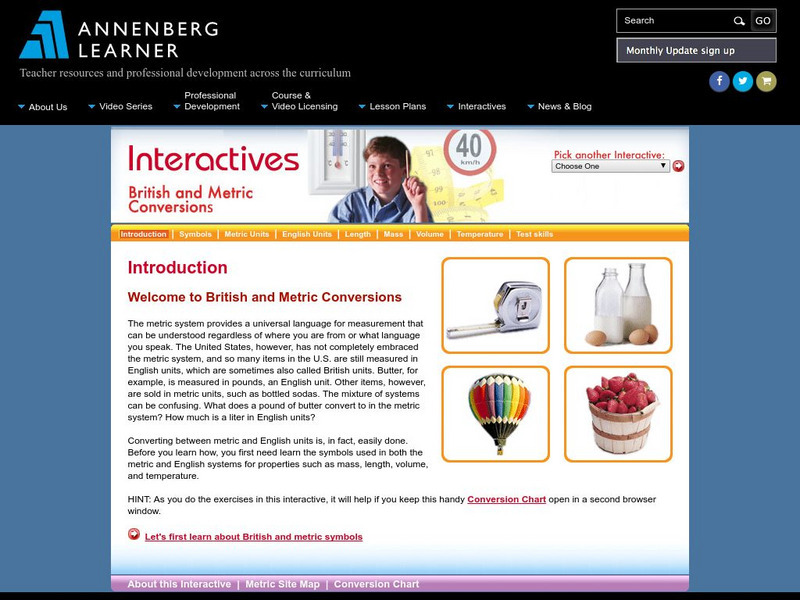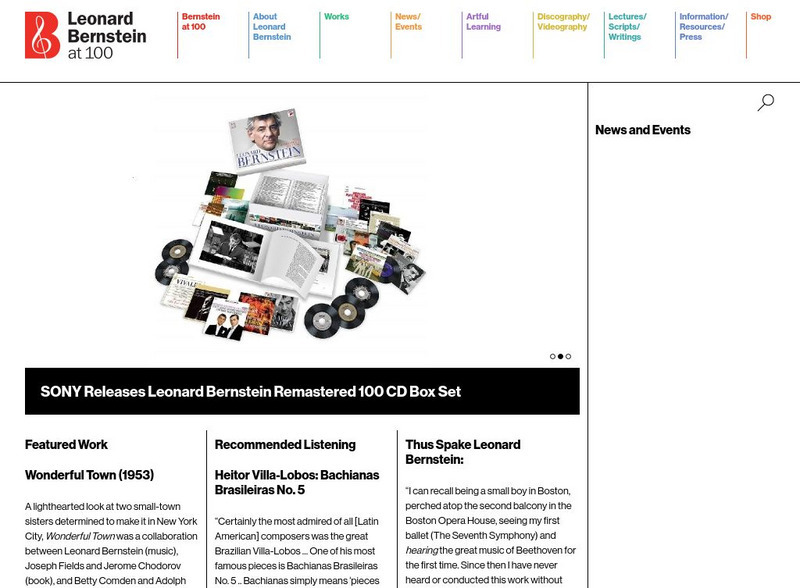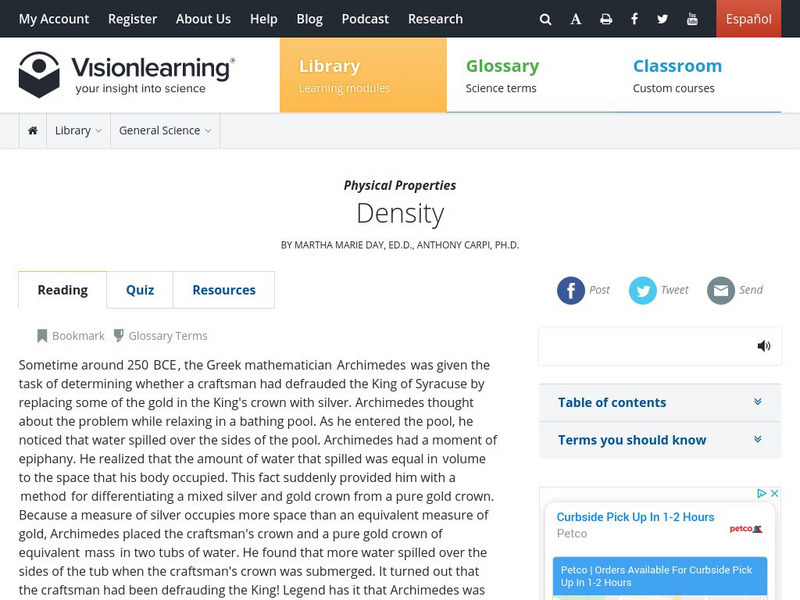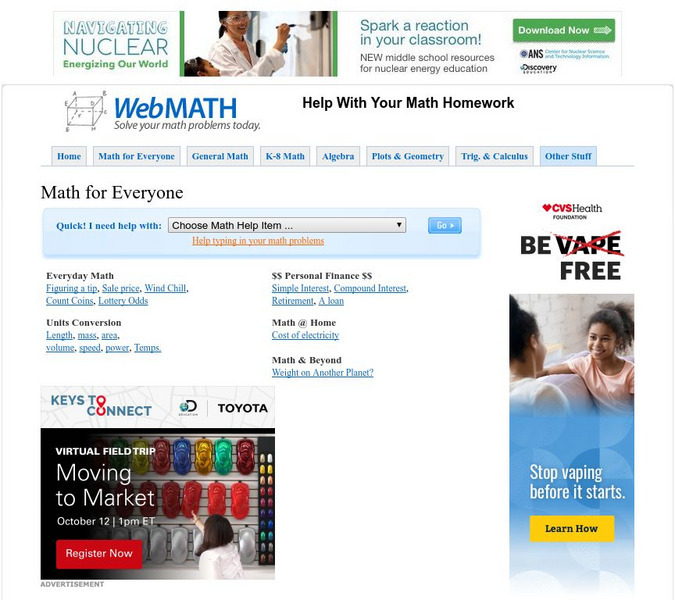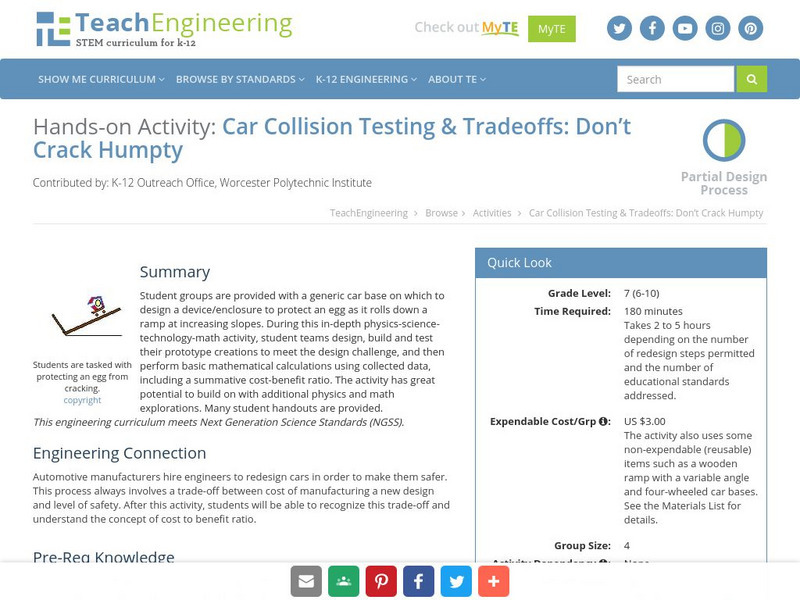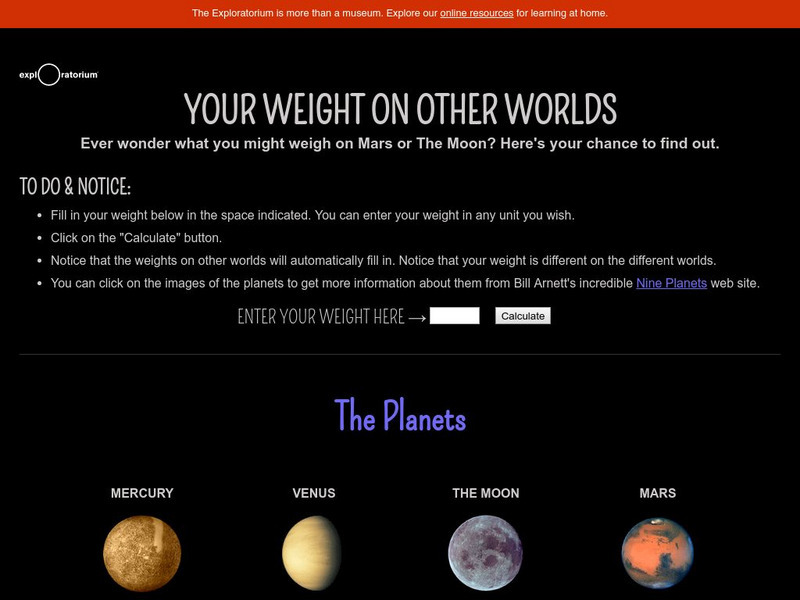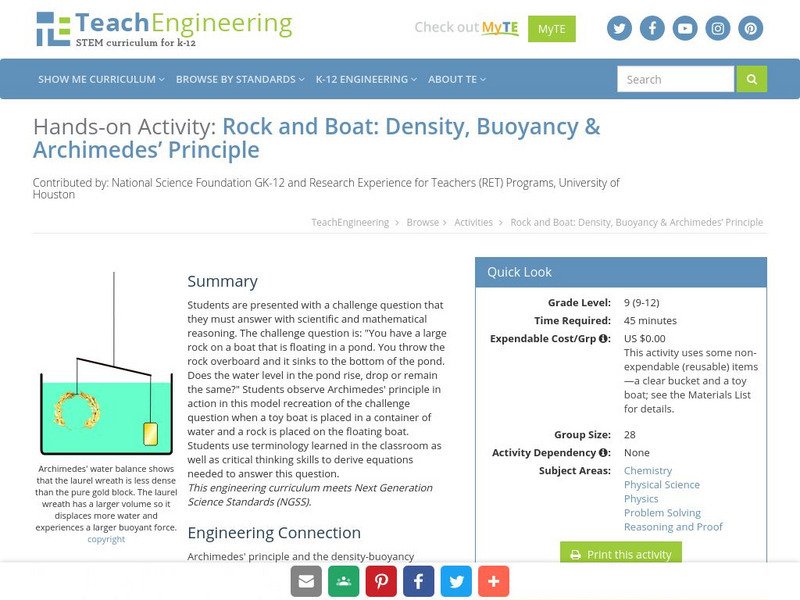TeachEngineering
Teach Engineering: Mechanics Mania
Through ten lessons and numerous activities, students explore the natural universal rules engineers and physicists use to understand how things move and stay still. Together, these rules are called "mechanics." The study of mechanics is...
TeachEngineering
Teach Engineering: The Physics of Fluid Mechanics
Five lessons about the study of fluid mechanics. The unit concludes with students applying what they have learned to determine the stability of individual above-ground storage tanks given specific storm conditions so they can analyze...
TeachEngineering
Teach Engineering: Move It!
Mechanical energy is the most easily understood form of energy for young scholars. When there is mechanical energy involved, something moves. Mechanical energy is a very important concept to understand. Engineers need to know what...
TeachEngineering
Teach Engineering: What Floats Your Boat?
Learners use modeling clay, a material that is denser than water and thus ordinarily sinks in water, to discover the principle of buoyancy. They begin by designing and building boats out of clay that will float in water, and then refine...
Texas Education Agency
Texas Gateway: Newton's First Law
Within this resource, you will learn more about Newton's first law and real-world applications of this law.
Texas Education Agency
Texas Gateway: What Is Density?
This tutorial is an explanation of the properties of density.
Annenberg Foundation
Annenberg Learner: British and Metric Conversions Interactives
The resource assesses students on British and metric conversions. There are tutorials on metric units, length, mass, volume, English units, symbols, and temperature. There is also an introduction and an interactive activity to test the...
University of St. Andrews (UK)
University of St. Andrews: Albert Einstein
A truly complete biography of the great man. Some adequate discussion of his theoretical and scientific work, but the accent here is on his personal life. Many anecdotes, many quotes from him, many references and hotlinks to other...
Other
The Official Leonard Bernstein Site
As the Official site, there are recordings, lectures, letters, photos, publications, scripts, etc. that are unavailable elsewhere. Links to the Library of Congress' Leonard Bernstein Collection, another excellent source.
Vision Learning
Visionlearning: General Science: Density
Instructional module focusing on density as a physical property of matter. Discussion incorporates historical references as well as formulas. Site also includes an interactive practice quiz and links relating to the topic.
Sophia Learning
Sophia: Physical Science: Conservation of Mass
Created to teach students of the 21st century, Sophia is bringing the laws of mass straight to your fingertips. Become the commander of your own learning experiences as you take part in this brief tutorial. [0:56]
Discovery Education
Discovery Education: Web Math: Math for Everyone
Provides online programs and explanations on everyday math: calculating a tip at a restaurant, determining the sale price of an item, finding the odds of winning a lottery, computing simple and compound interest, and more.
TeachEngineering
Teach Engineering: Car Collision Testing & Tradeoffs: Don't Crack Humpty
Student groups are provided with a generic car base on which to design a device/enclosure to protect an egg as it rolls down a ramp at increasing slopes. During this activity, student teams design, build and test their prototype...
Exploratorium
Exploratorium: Your Weight on Other Worlds
From the Exploratorium Museum. Includes an interactive feature in which a visitor enters their weight on earth and has their weight on other planets computed and displayed. Discusses the distinction between mass and weight and describes...
Georgia State University
Georgia State University: Hyper Physics: Mass, Weight, and Weightlessness
Site from HyperPhysics dealing with the topic of mass and weight. In addition the site deals with weightlessness. The numerous links to other pages help the student see how ideas are interrelated.
Utah State Office of Education
Utah State Office of Education: Force, Energy, & Motion
A unit on energy, force, and motion presented with interactive and classroom activities. Students gain an understanding of weight, mass, potential and kinetic energy, sound, and heat with this engaging resource.
eSchool Today
E School Today: All About Forces
Forces are everywhere. Learn what they are, the characteristics of forces, different kinds of forces, and factors that affect them.
Discovery Education
Discovery Education: Rules of Forces and Motion
With this hands-on lesson, help students understand force, gravity, friction, and speed. Students will also learn how each of these concepts affects the another.
NASA
Nasa: Mass vs. Weight
Several learning modules that explain the difference between mass and weight. Each module includes a video introduction and detailed lesson plan.
Utah Education Network
Uen: May the Force Be With You
Third graders will understand that the greater the mass of an object, the greater the force needed to change its motion.
Utah Education Network
Uen: It's a Weighty Matter
Third graders will understand weight, mass, and gravity.
Utah Education Network
Uen: Super Paper Planes
Activity helps students understand force, mass, and measurement.
TeachEngineering
Teach Engineering: Rock and Boat
Students observe Archimedes' principle in action in this challenge where a toy boat is placed in a container of water and a rock is placed on the floating boat. Students must explain why the water level rises/falls/stays the same based...
American Chemical Society
Middle School Chemistry: What Is Density?
Calculate the density of cubes made of different materials to determine what type of material it contains. Using this information explain that the size, mass, and arrangement of the atoms or molecules of a substance determines its density.


